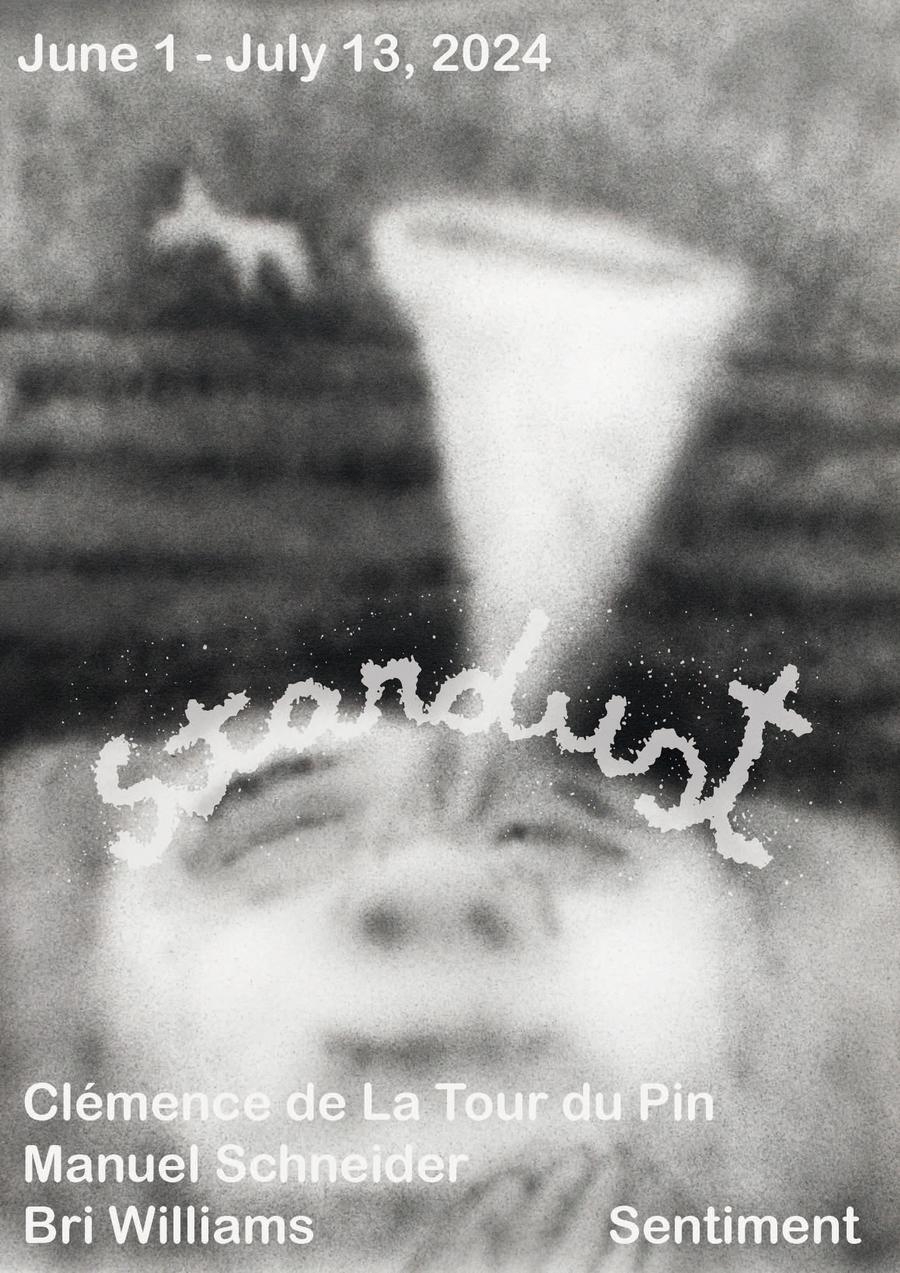Clémence de La Tour du Pin, Manuel Schneider, Bri Williams — Stardust
Clémence de La Tour du Pin, Manuel Schneider, Bri Williams
Stardust
June 1 – July 13, 2024
Imagine a universe where every twinkle in the night sky has a story to tell. Stardust carries
the whispers of the cosmos, holding the history of long-gone stars. These particles,
scattered across the vast expanse of space, are the seeds of new worlds or residues of the
old ones. They travel through space, mixing with interstellar clouds, and over countless
ages, they clump together to form the bedrock of new stars, planets, and, ultimately, life
itself.
Stardust was once only an annoyance for astronomers, as it obscured objects they wished
to observe. In our solar system, interplanetary dust causes the zodiacal light, a triangular
and diffuse glow of light surging from the horizon in our night sky. With more recent
observation tools, the dust became an object of study in itself, narrowing the distance
between the sky and the Earth. The complex and varying composition of the cosmic dust
could be weighted, quantified, and analyzed by space explorers and geologists. Like a thin
rain, several tons of stellar dust are attracted yearly by Earth's gravity, sprinkling the vast
but shrinking immaculate white surfaces of the Arctic and Antarctica or accumulating in
thick and muddy sediments at the bottom of the oceans.
Re-adapting ancient trompe-l'oeil craft techniques of the Van der Kelen-Logelain school,
Clémence de La Tour du Pin delves into themes of tradition, metamorphosis, and the
ethereal, crafting intricate, highly processed objects that weave narratives of the
reimagination and transformation. Umbrella parts, textile pieces, photographs, and even
artistic techniques are stripped of their original purposes and given new shapes, functions,
and a new life through reinterpretation and reassemblage. By artificially replaying the
natural cycle of destruction and recreation on objects, Clémence de La Tour du Pin mimics
the very fabric of matter. Finished, these objects become sedimented layers of historical
knowledge that preserve and transcend their origins.
Manuel Schneider's artworks are complex entanglements of found materials: scrap wood,
metal, rope, and wire. Disparate pieces are brought together with care and meticulosity,
tied together with knots and bandages, to reach a point of balance and singularity. These
purposely unidentified, yet familiar objects remind the instruments of the astronomers, the
UFO fanatics, or the shamans, such as lenses and antennas, drums and portals. They evoke
times when scientific and spiritual knowledge were participating in the same cosmology, a
time when the observation of nature and the stars was the other pendant of the study of
one's own soul and spirit.
Duality is omnipresent in Bri Williams's work, reflecting on the nature of existence and the
inherent conflicts within the human experience. By repurposing everyday objects like
cutting boards and transforming organic materials like flowers, Williams bridges the gap
between the tangible and the intangible, creating art that speaks to the soul's deeper
struggles and triumphs. The contrast between the delicate flowers and the harsh dunce cap
creates a dialogue about vulnerability, resilience, and the transformation of natural beauty
into a preserved, almost artificial state. But perhaps this foolish attempt to subtract matter,
even temporarily, from its natural evolution may only accelerate its disintegration into
crumbles and dust.
